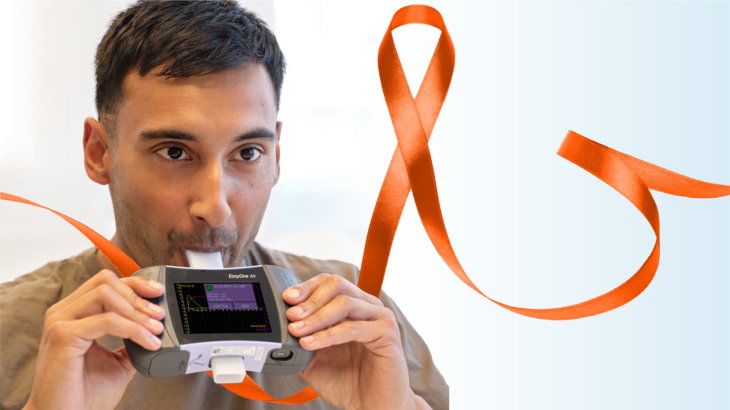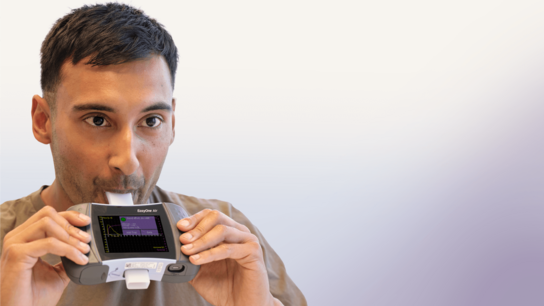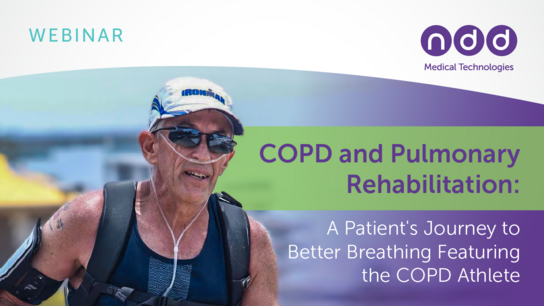Living with COPD: Strategies for Managing Symptoms, Improving Quality of Life, and Promoting Lung Health – Part 2

Table of contents
November is Chronic Obstructive Pulmonary Disease (COPD) Awareness month. COPD is a pulmonary disease characterized by shortness of breath, cough, lung abnormalities, and airway obstruction. COPD can be caused by various factors, including but not limited to cigarette smoking, air pollution, biomass exposure, and abnormal lung development. It is the third leading cause of death worldwide, causing 3.23 million deaths in 2019. Its prevalence is expected to increase in coming years. The condition has a profound effect on individuals both physically and mentally, with 43.5% of those with COPD reporting anxiety or depression a rate more than 2 times greater than those without COPD.
In 2020, despite approximately 5% of Americans being affected by the condition, COPD received the 175th most amount of money from the National Institutes of Health. Due to its prevalence, impact, and comparably low amount of research funding, COPD Awareness Month is especially important. In this blog, we’ll highlight many components of COPD: Symptoms, preventing complications, improving quality of life, future COPD treatment, and more.
This is the 2nd part of our series “Living with COPD”.
Read part one here.
Managing flare-ups with COPD (Exacerbations)
Exacerbations, or “flare-ups” of COPD symptoms, are defined by GOLD as “event[s] characterized by dyspnea and/or cough and sputum that worsen over < 14 days.”*
There are two primary goals in COPD treatment: Manage symptoms; and prevention and treatment of exacerbations.* More specifically, though, during an exacerbation, the goal is to minimize the negative impact and prevent subsequent events.* Exacerbations are classified as mild, moderate, or severe based on various thresholds including but not limited to heart rate, respiratory rate, dyspnea intensity, and oxygen saturation.* Exacerbations, even mild and moderate ones, negatively impact health status, worsen quality of life, and increase rates of hospitalization.*
To reduce the negative impact of exacerbations, GOLD recommends patients work closely with their care team to establish effective self-management interventions, which have been shown to improve patient outcomes.* These interventions include smoking cessation and developing plans for what to look for, what to do when symptoms worsen, and when to reach out to your clinic.*
Preventing complications
As stated above, many common COPD symptoms are not specific to COPD only. This reality is one of the reasons spirometry is required to confirm a diagnosis. Even after diagnosis, though, COPD symptoms are still not only specific to COPD and sometimes respiratory symptoms can worsen due to progressing COPD, including exacerbations, but other times, symptoms can be emergent of comorbidities, such as heart failure or lung cancer.*
Preventive measures, including pneumococcal, influenza, and COVID-19 vaccines, routine healthcare visits, and a written action plan developed with your care team (including the aforementioned plan of what to be aware of if symptoms change) all play a key role in preventing or monitoring comorbidities and complications.
Improving quality of life
Living with COPD is undoubtedly challenging. Physical activity tends to be decreased in people with COPD, likely due to challenges posed by symptoms including shortness of breath.* Comorbidities such as anxiety and depression can cause people with COPD to draw inward, spending less time with friends and family.* As physical activity and social engagement decline, lung function declines and rates of hospitalization increase, contributing to poorer quality of life.*
Yet, physical activity and pulmonary rehab, as evidenced by COPD athlete Russell Winwood, can play extremely important roles in improving the quality of life in people with COPD. GOLD recommends both physical activity and pulmonary rehab for all individuals with COPD, regardless of airflow obstruction.* Of course, it’s important to recognize that some people may be more limited in their exercise; the European Lung Foundation has great recommendations on how to approach exercise at different levels of lung function.
The importance of exercise, hobbies, and maintaining strong relationships with others cannot be overstated: Evidence has shown that independent of COPD symptoms, investing in these behaviors has two major benefits: Improving patient self-efficacy (i.e., one’s belief in themselves and in their ability to accomplish goals); and these behaviors actually mediate the negative health consequences of COPD, including symptoms, anxiety, depression, and impaired quality of life.*
Future of COPD treatment
As previously stated, the two primary goals of COPD treatment are to treat symptoms and prevent and reduce the impact of exacerbations.* In a perfect world, if symptoms are well-managed and exacerbations are successfully entirely prevented, people with COPD can remain stable.
Due to the complexity of the COPD and its various subtypes, treating the condition in novel ways poses additional and unique challenges. With improved understanding of the mechanisms underlying the subtypes — and an increased understanding of COPD biomarkers is a major priority in COPD research — novel therapies, including precision medicine could prove beneficial for the COPD community. Novel therapies, which aim to treat COPD in new ways, could also arise, including the potential of human adipose-derived mesenchymal stem cells to treat pathogenesis of COPD.*
Some promising ongoing types of studies include:
- Investigating home-based health management of COPD
- Therapeutic studies investigating different approaches to prevent exacerbations
- L-carnitine for fatigue in COPD
And many others, which can be found at the following websites:
- American Lung Association’s website
- University of California San Francisco’s website
- Mayo Clinic’s website
Conclusion
COPD is a major, globally significant condition that is expected to only affect more and more people over time. The condition poses difficulties for those living with COPD, but that does not mean it’s not possible to be optimistic. First and foremost, a diagnosis is key, followed by establishing a strong relationship with your clinic to provide a sense of confidence that your condition will be well-managed.
Through self-management techniques, pulmonary rehabilitation, healthy habits including smoking cessation, hobbies, physical activity, and social engagement, it’s possible to live a healthy, active, and fulfilling life with COPD.






